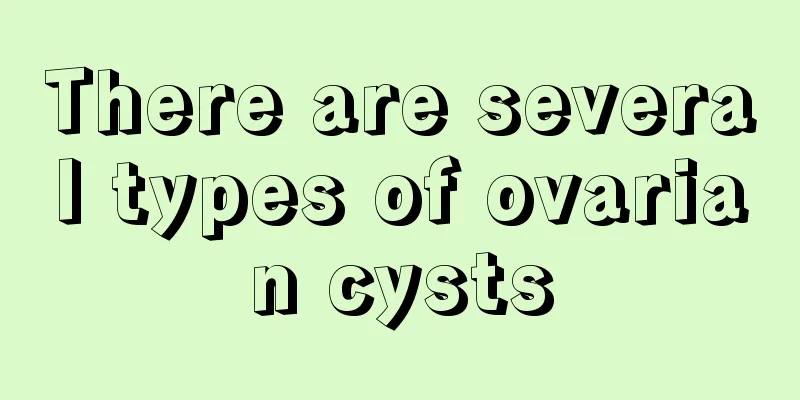There are several types of ovarian cysts

|
Ovarian cysts are a common disease among women. When suffering from this disease, symptoms such as lower abdominal pain, vaginal bleeding, and lower abdominal pain may occur during bowel movements. And ovarian cysts can be divided into several types, such as chocolate cysts, functional cysts, hemorrhagic cysts, etc. No matter which type, the impact on the human body is relatively large, and people need to understand it. Here we will introduce several types of ovarian cysts. Ovarian cyst is a common tumor of the female reproductive system. Since patients often have no symptoms in the early stages, diagnosis is difficult, resulting in poor clinical treatment results. So, what are the effects of ovarian cysts? Experts point out that the impact of ovarian cysts is mainly reflected in causing female infertility or early menopause. Clinically, ovarian cysts can be roughly divided into 7 types:
1. Chocolate cyst: Endometriosis grows in the ovaries, forming a large amount of sticky brown and chocolate-like liquid. 2. Functional cysts: They occur in women of childbearing age during the ovulation cycle. They are caused by an abnormal amount of fluid accumulating in the follicles or corpus luteum. Although they can sometimes be very large, they usually disappear on their own within three months regardless of whether medication is used or not. 3. Teratoma: This is a very special cyst. It may be caused by a problem in cell differentiation during the embryonic period. It will produce hair, teeth and some oil accumulation in the ovary. So it is best to remove it early. 4. Hemorrhagic cyst: Follicular cyst and corpus luteum cyst grow too rapidly, causing the ovarian tissue to be pulled and bleed. When blood has no outlet, it accumulates in the ovary and becomes a hemorrhagic cyst. It usually goes away on its own but it takes a long time. Medication can be taken to relieve symptoms. In a few cases, patients with more severe symptoms may require resection. 5. Ovarian cancer: Generally speaking, middle-aged and elderly women are more likely to get epithelial cell cancer, which has a higher chance of recurrence and a poor prognosis. 6. Serous epithelial cysts and mucinous epithelial cysts: Because the serous cells and mucinous cells with secretory functions are buried in the ovaries after ovulation, they continuously secrete fluid to form cysts. Requires surgical removal. 7. Endometrioid tumor: The tumor has a smooth surface and is often unilocular. Its inner wall is composed of a layer of tall columnar epithelium that is very similar to the endometrium. |
<<: Is pelvic closure surgery done once?
>>: Will ovarian cysts cause abdominal bloating?
Recommend
What happens if I feel something coming out after sex?
After sex, both men and women will feel something...
It's not a period with a little bleeding
It is not a small amount of bleeding during menst...
The follicle turned into a cyst and I got pregnant
Many female friends will find that they have not ...
Why does yellow discharge appear after abortion?
I believe every woman knows that miscarriage is l...
Why does itching of the vulva occur during menstruation?
Nowadays, many female friends are troubled by the...
A comprehensive look at knee injuries: knowing what it is, why it happens, and moving towards a comprehensive recovery journey
With the improvement of people's living stand...
Which is more recommended, medical abortion or surgical abortion?
Due to various factors such as the family plannin...
What medicine to take during menopause
Many women will suffer from insomnia after enteri...
iPS cells: a new approach to treating intractable diseases
On August 29, 2019, a research team from Osaka Un...
What should I do if the yellow-green leucorrhea does not itch?
This is a symptom of abnormal leucorrhea, which i...
It is recommended that single girls read this article carefully! (Those who are already single should read this even more)
Appendix: References [1] Expert consensus on immu...
Can I eat grapes during confinement? Pregnant women must know
Grapes are highly sought after because of their m...
The best time to remedy the problem of milk insufficiency
For mothers, they will try their best to breastfe...
What is a sink? How long does it take to use the kitchen sink after applying glue?
A sink is an instrument used to drain water, coll...
A woman's tongue reveals her illness
In life, we taste all kinds of food through our t...









